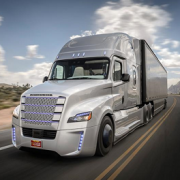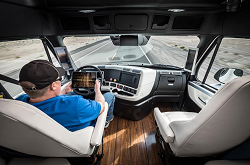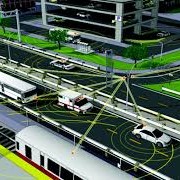Car Crash: Driverless Tech will Drive Auto Insurers Out of Business
Burney Simpson
Auto insurers are in serious trouble.
That’s the word anyway from a number of large business consultants who apparently see an opportunity selling their services to the insurers.
Several of the consultants released reports recently suggesting auto insurers better get it together before autonomous vehicles put them out of business.
The international business advisory firm KPMG reports that the advanced safety and accident avoidance systems in autonomous vehicles could lead to decline in accidents-per-vehicle by as much as 80 percent. That in turn will cause a decline in the current auto insurance industry, which could shrink to 40 percent of its current size by 2040, KPMG believes.
Meanwhile, auto insurance executives don’t see the threat of the technology, at least in the near term, KPMG writes in its study “Automobile insurance in the era of autonomous vehicles.”
As part of its report KPMG conducted a survey of top insurance executives. More than 95 percent say autonomous vehicle technology will have no impact on their industry by 2020. Their attitude bends somewhat when discussing six to 10 years out, with 41 percent of the executives saying the technology will impact their industry somewhat or very significantly by 2025.
DRASTIC CHANGES
Meanwhile, Deutsche Bank this month predicted the drastic changes to industry will happen on a faster timeline than that foreseen by KPMG.
In an analysts report on Progressive Insurance, Deutsche said that self-driving cars and ride sharing programs will completely alter auto insurance. There could be a large number of accident-free cars on the roads in 10 years, and it’s not clear there will an auto insurance industry in 20 years, according to Deutsche.
And then there’s David Powell, a manager with Lloyd’s Market Association, who tells trade pub Insurance Age that autonomous cars will drive down the number of accidents, leading to consolidation among auto insurers. Accident liability could move from the vehicle owner to the manufacturer, further fracturing the insurance industry.
INSURANCE TELEMATICS USA
These types of changes to the insurance industry will be a major topic of discussion at the Insurance Telematics USA 2015 conference and exhibition in Chicago on September 2-3.
Show organizers say there will be 800 senior level executives attending, with 57 percent from top North American insurance firms. Others are from auto OEMs, industry suppliers, tech houses, and consulting firms.
The agenda offers five tracks – Business Models and Tech Innovations, the Connected Car Disruptor, Claims & Telematics, the Consumer at the Heart of UBI, and Data Decisions & UBI.




